Tsumeb mine
The Tsumeb mine
The Tsumeb mine in Namibia is arguably the most famous mine in the world. Because of its geology, the mine has produced some of the best mineral specimens in the world, including the much sought after dioptase.
The mine was active for over 90 years ending operations in 1996. It is still known to be the most important mine in the world among collectors.
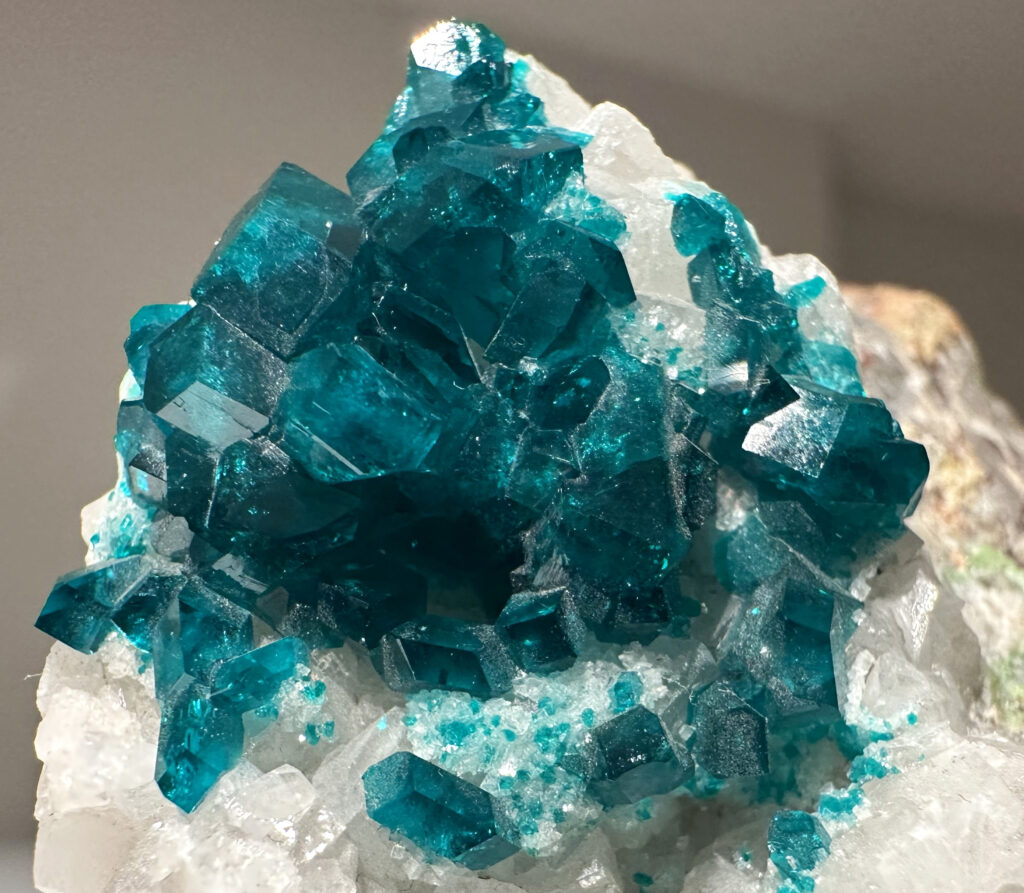
242
Different species
40
Minerals only found here
65
Different types of pseudomorphs
Specimens in the exhibition from Tsumeb
Tsumeb is a small village, founded by Germans, situated in the Otavi mountain region in northeastern Namibia, formerly South West Africa.
Tsumeb is also the name of an important ore body and mine. The mine is probably the most famous and most versatile mine in the world.
Tsumeb is extremely fascinating, not only because of the many unique minerals in the mine, but also for the mining history and the contrast between original inhabitants and settlers, mainly from Germany dating back to colonial times. The enormous diversity of minerals is due to several geological factors, one of which was the existence of three oxidation zones.
Amazing numbers
The mine offers one of the greatest varieties of minerals in the world. 242 different species were found in addition to 38 still unknown species. Of the 52 minerals discovered for the first time at Tsumeb, 40 are known to occur only there. The crystallization of most minerals are so perfect and aesthetic that 65 species are known to display the finest crystals known at any deposit. Of these, 37 species have been found as spectacular, macroscopic crystals, unrivaled by any other locality. Adding these “best species” to the minerals unique to Tsumeb, the mine would produce 105 minerals qualifying for the world’s best for the species.
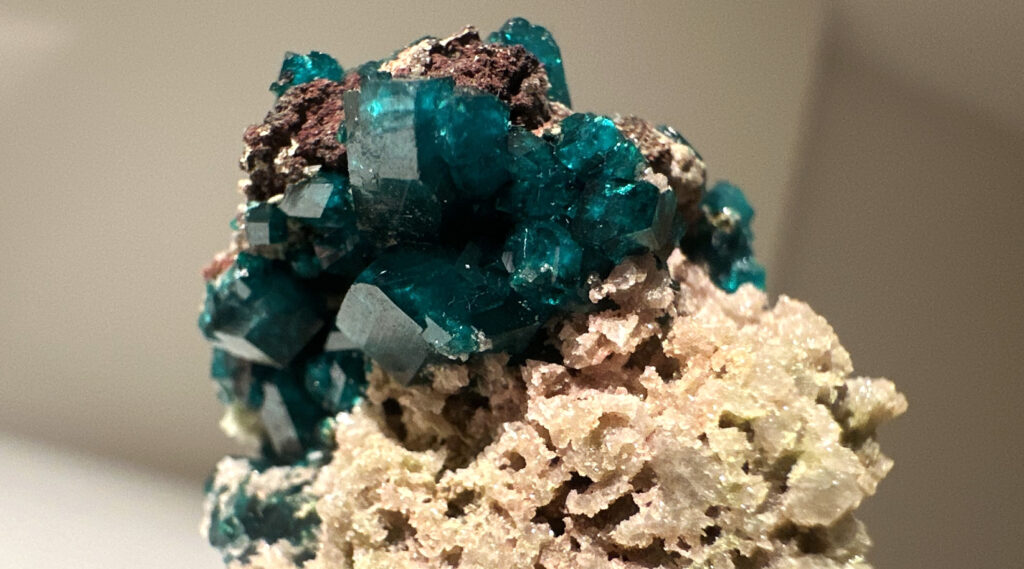
Tsumeb pseudomorphs are also outstanding. In mineralogy, a pseudomorph is a mineral or mineral compound that appears in an atypical form (crystal system), resulting from a substitution process in which the appearance and dimensions remain constant, but the original mineral is replaced by another due to alteration, or chemical substitution, dissolution and refilling, structural changes or incrustation. The amazing pseudomorphs of Tsumeb is due to the very special geology and oxidation zones of the mine. A more common pseudomorph at Tsumeb is malachite replacing azurite. The Tsumeb pseudomorphs are represented by 65 different types, which is far ahead of all known mineral localities.
Many localities have produced specimens generally considered to be the finest of the species ever found. However, most of the localities are known only for one or two species of the quality. In contrary, Tsumeb exhibits more outstanding mineral specimens than most localities even contain minerals. These minerals provide a benchmark for every collector of minerals.
Tsumeb does not keep to set mineral rules, as the wide variety of minerals shows. The presence of chemical components necessary for the formation of minerals was so plentiful and varied, that there are deviations in the composition of even simply structured minerals.
History
The rise of a new mine
There is no clear fact to where the name comes from, but it is suggested that it comes from a tribal word. It was told that tribal people repeatedly tried to dig a well in the vicinity of the green hill where the Tsumeb mine was later excavated, but the well kept on collapsing. The tribal people named the place Tsombtsou, which means “to dig a hole that collapsed again”. In time the word Tsombtsou changed to Tsumeb. Ironically, the very place where the wells were unsuccessfully dug now forms the water hazard at the present day golf course.
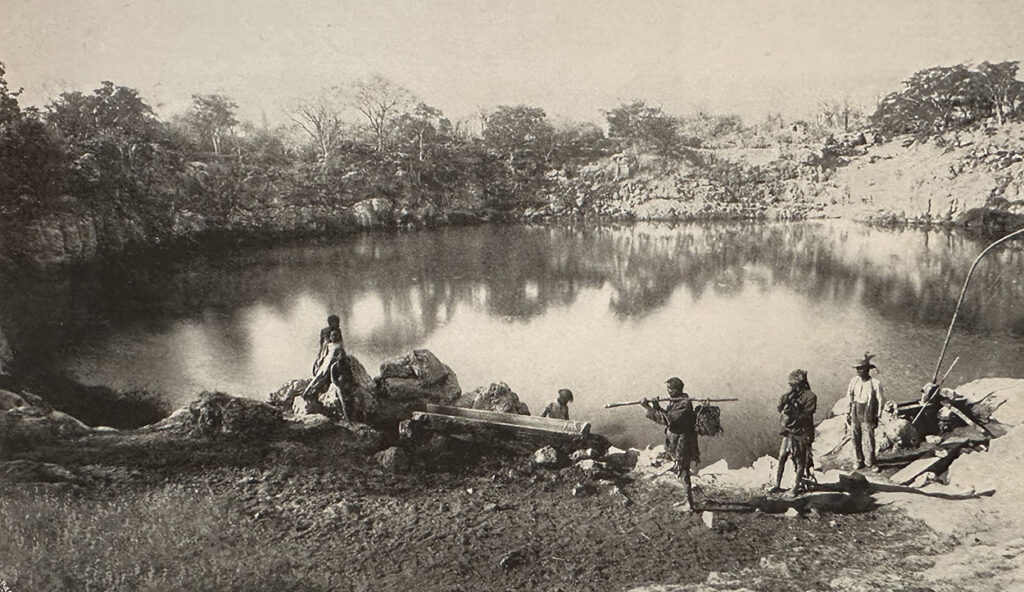
The first story of an area rich of minerals comes from the beginning of the 18th century close to the Otjikoto lake. In an ordinary trade between the Ovambos, from the north of South West Africa and bushmen, some new items are presented. In addition to the usual Ostrich eggs and skins, the bushmen has brought blue and green rocks, glittering in the sun. The copper-based minerals became a common trading item. When the rocks were melted, the Ovambos could make jewelry made out of copper rods. The first Europeans who traveled through South West Africa that heard about the ore trading were the Swede Charles John Andersson and the Englishman Sir Francis Galton. Accompanied by Ovambos and Damaras, they “discovered” the Otjikoto lake in 1851.
The previously secret and hidden ore deposit by the bushmen, was later taken over by the Ovambos with the bushmen working for them. In 1875, two Americans went to the area to breed ostriches. As the project failed miserably, they searched for another source of income. They then tried to mine copper ore and melting it in a homemade furnace. The samples were sent to Cape Town in South Africa for analysis. The results were positive and the Americans were recommended to start mining operations. That was not welcomed by the Ovambos and as the tension grew, the Americans had to leave the place in 1876.
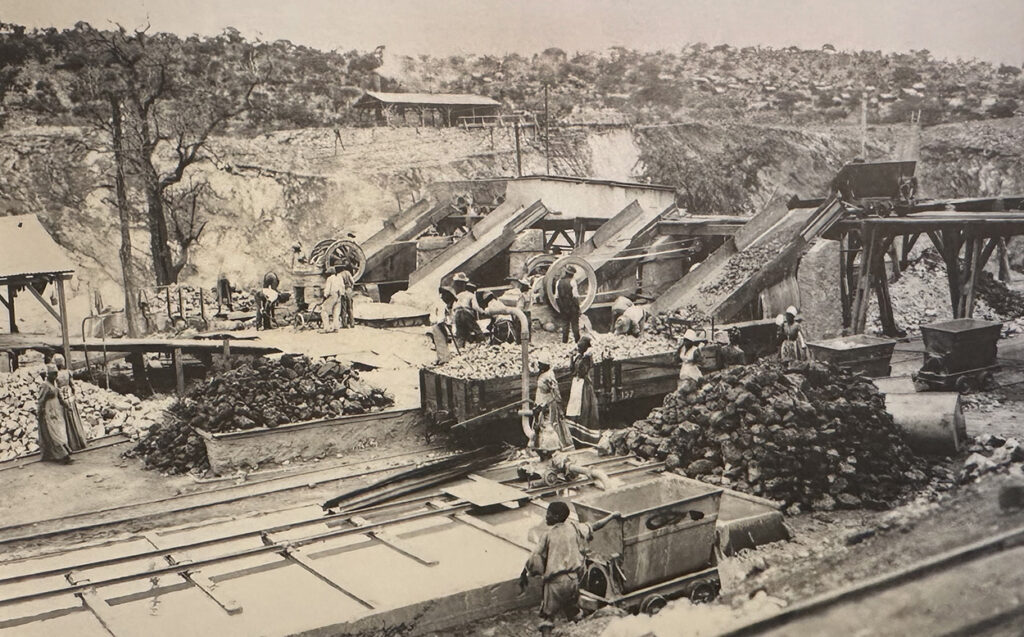
More Europeans eventually arrived to the site and purchased the land where the copper ore had been discovered. The land changed ownership a few times between Germans and Englishmen and several expeditions to the land followed to determine the quality of the ores. It was not until 1900 when the Otavi Minen-und Eisenbahngesellschaft (OMEG) was founded that serious mining was planned. The German-based company estimated that the ore content was 12% copper and 25% lead after initial mining in 1901. Mining operations grew at a slow and steady pace. By 1906 the deepest division of the shaft had reached 85 meters and railway tracks had now reached Tsumeb. The miners were from many countries. In addition to native miners, Germans were most represented. As pipelines were added and efficient water supplies constructed, the mine was growing at a faster speed.
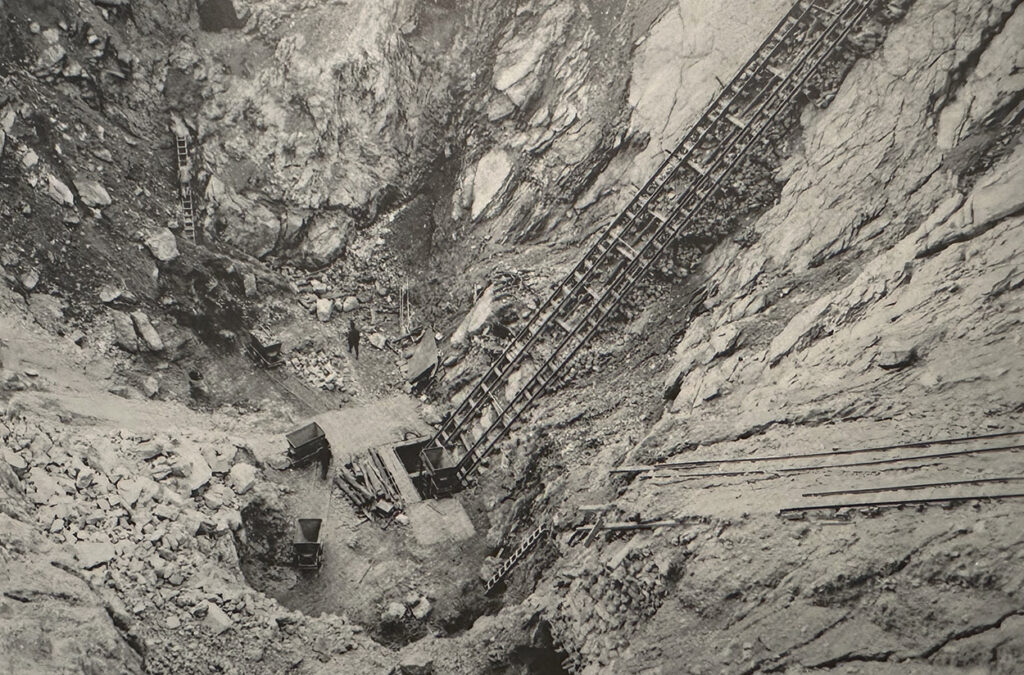
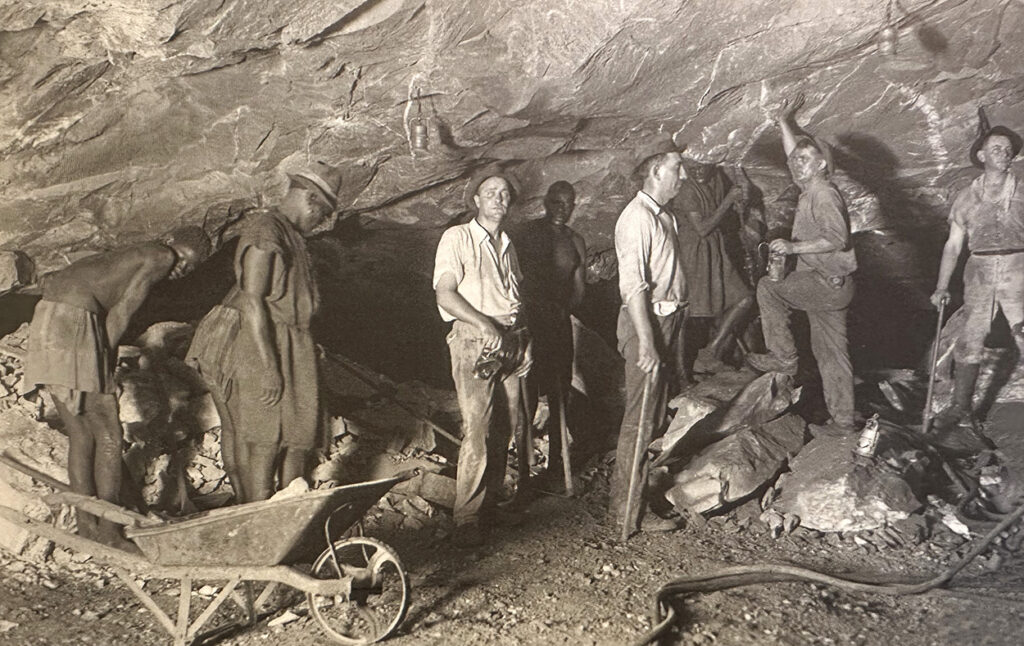
The OMEG company sells the mine
Throughout the years, the mine went through crisis, accidents and change of ownership several times. The OMEG company operated the mine for the longest time and sold the operations in 1946 for close to 1 million pounds. During its operations, OMEG had extracted 2.3 million tons of ore with an average grade of 8.2% copper, 17.7% lead and 8.4% zinc. A depth of 576 meters had been reached (20 levels).
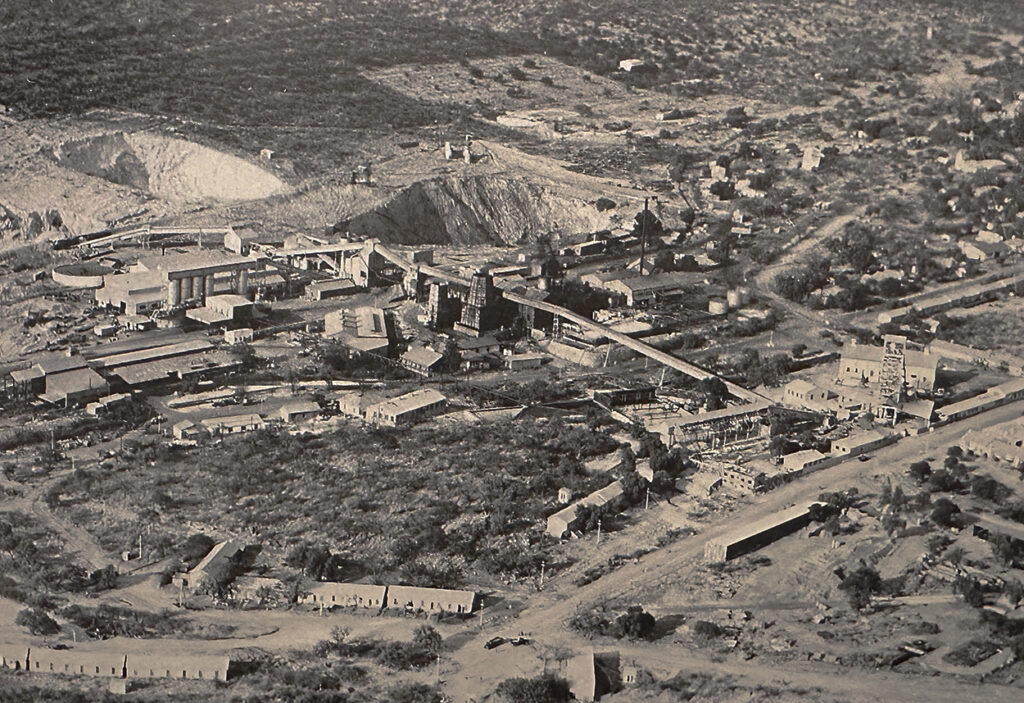
The last years of operation
The last ownership was by the Gold Fields Group of South Africa in 1988. In 1990 Tsumeb mined over 600 000 tons of ore, from which 13 000 tons of blister copper and close to 9500 tons of lead were produced. The ore reserves still counted for 1.5 million tons. The surprising find of a rich ore lens with a metal content of 18% prolonged Tsumeb’s lifetime.
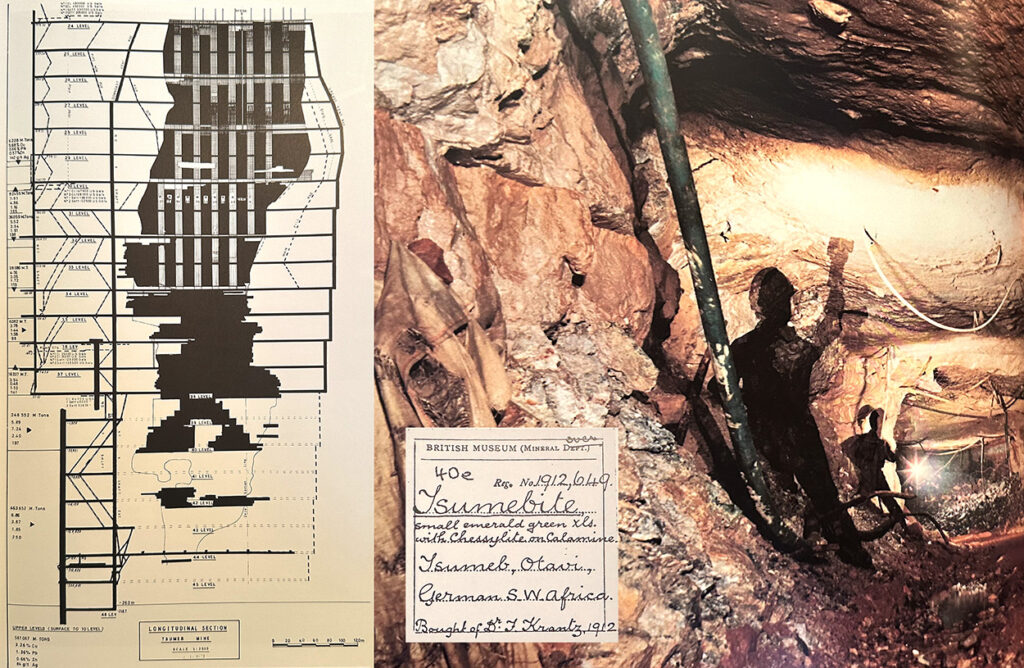
But finally, in May 1996 mining was stopped on the 48th level due to insufficient ore and high costs of pumping the tremendous amounts of water at this depth of about 1650 meters below surface. In June 1996, the De Wet Shaft was flooded. The pump fell silent and water poured into the mine at a rate of about 700 cubic meters per hour.
But mining operations on the upper levels continued. These operations were stopped by the longest miners’ strike in Tsumeb’s history, lasting six weeks in July and August 1996. Mining operations have not resumed since then.
Despite a somewhat turbulent history, the mine was remarkably profitable throughout its over 90 years of existence. Around 90 million tons of ore have been shifted at Tsumeb yielding over 4 million tons of metal, of which just under half comprised copper.
Specimens from Tsumeb in the exhibition
AN AMAZING TSUMEB SPECIMEN
Azurite crystals
Amazing Azurite specimen with high quality crystals in addition to dark green malachite, light green duftite, transparent cerussite and turquoise rosasite.
A great example of a Tsumeb specimen with many different colors and minerals.
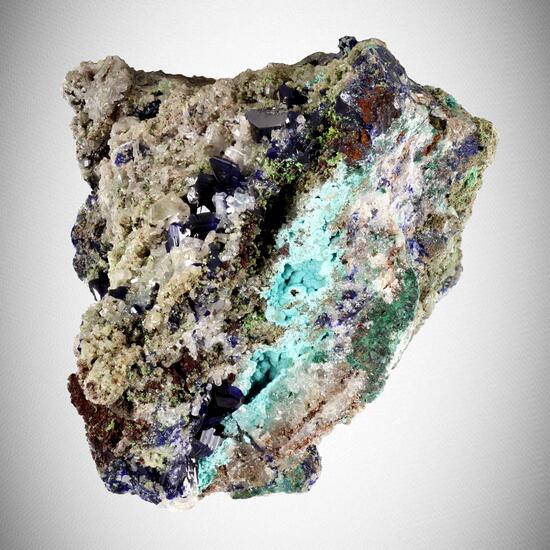
Azurite: Cu3(CO3)2(OH)2
Cerussite: PbCO3
Malachite: Cu2CO3(OH)2
Duftite: PbCuAsO4(OH)
Rosasite: (Cu,Zn)2(CO3)(OH)2
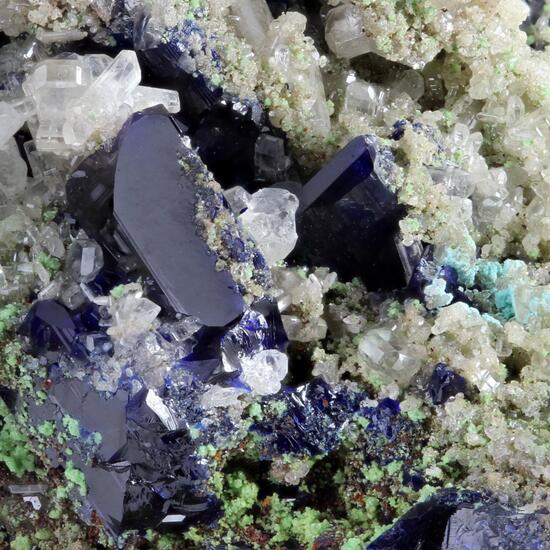
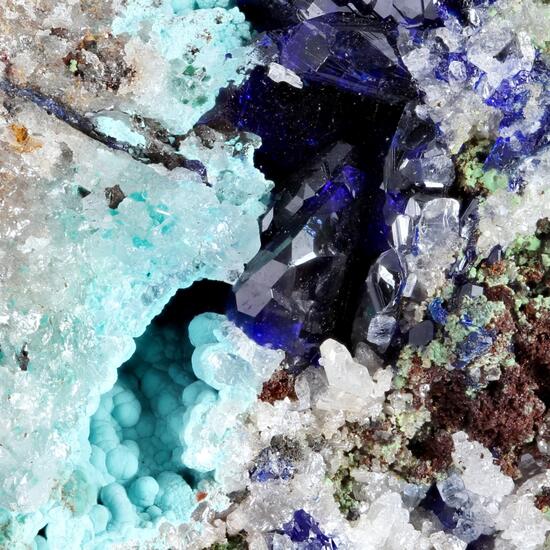

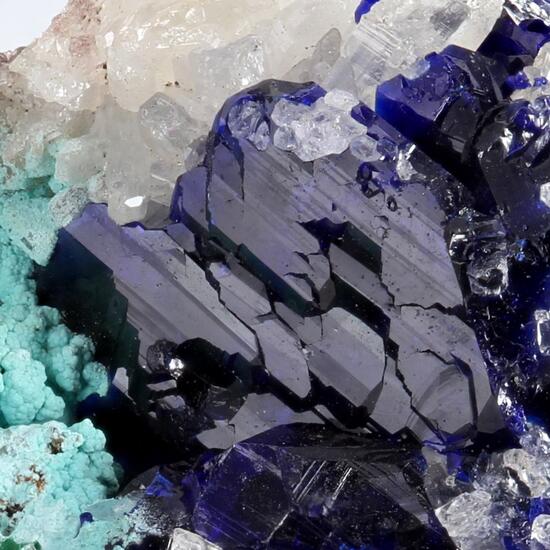
Dioptase and Calcite
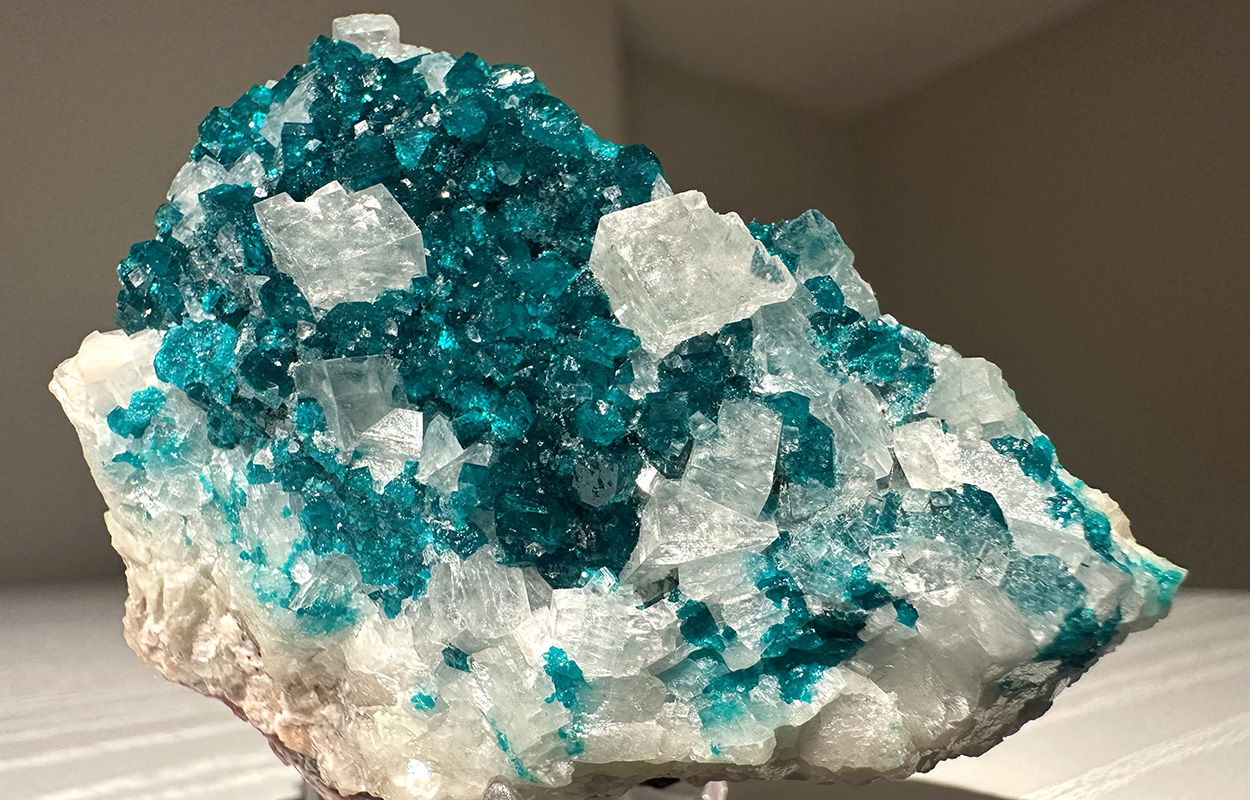
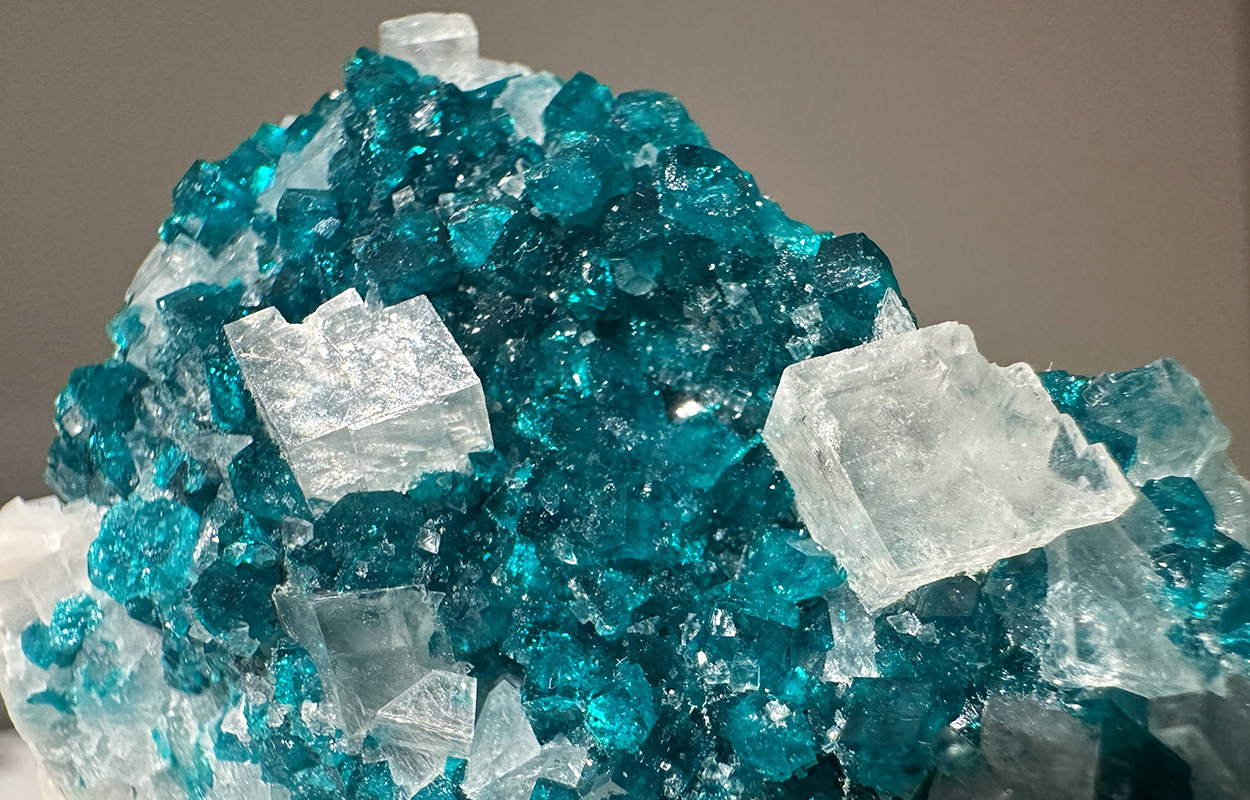
Dioptase
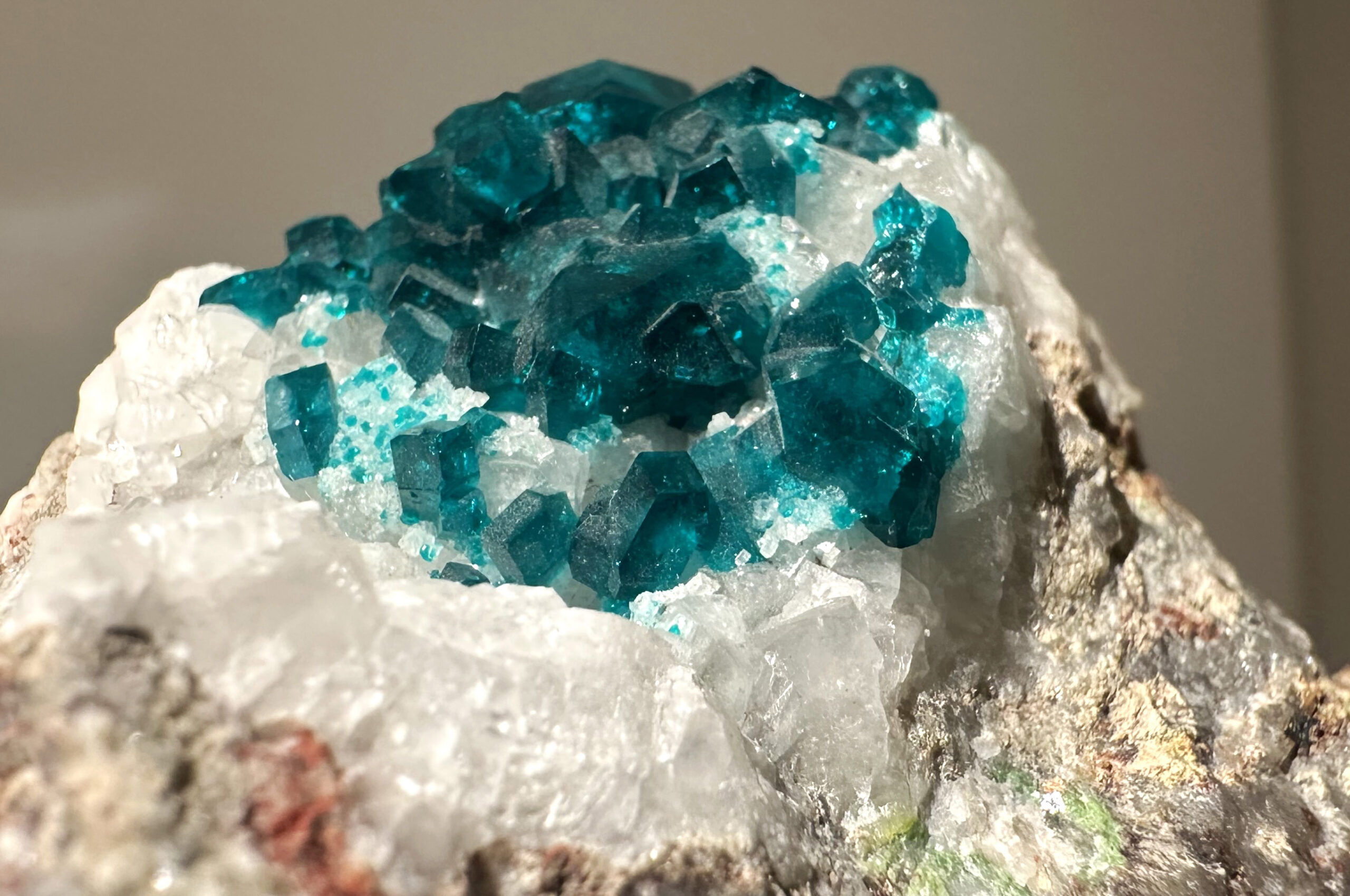
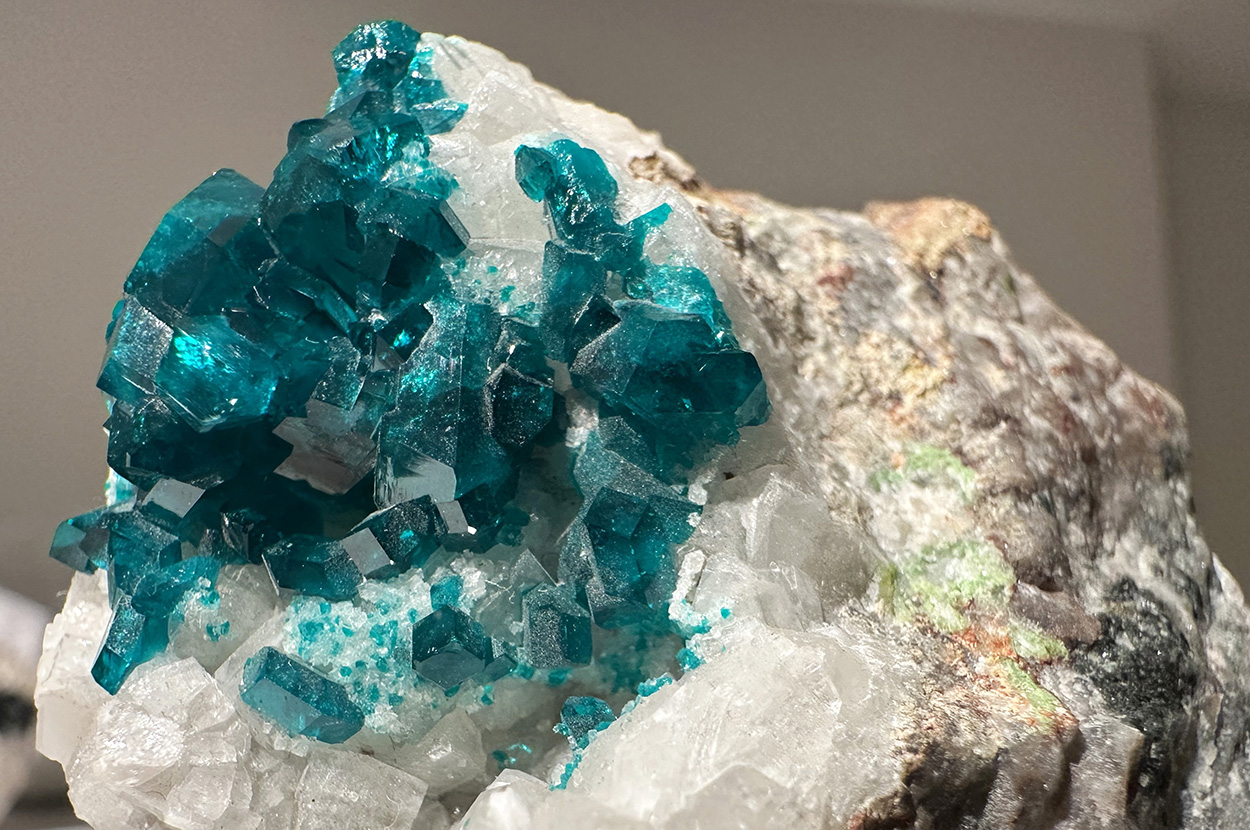
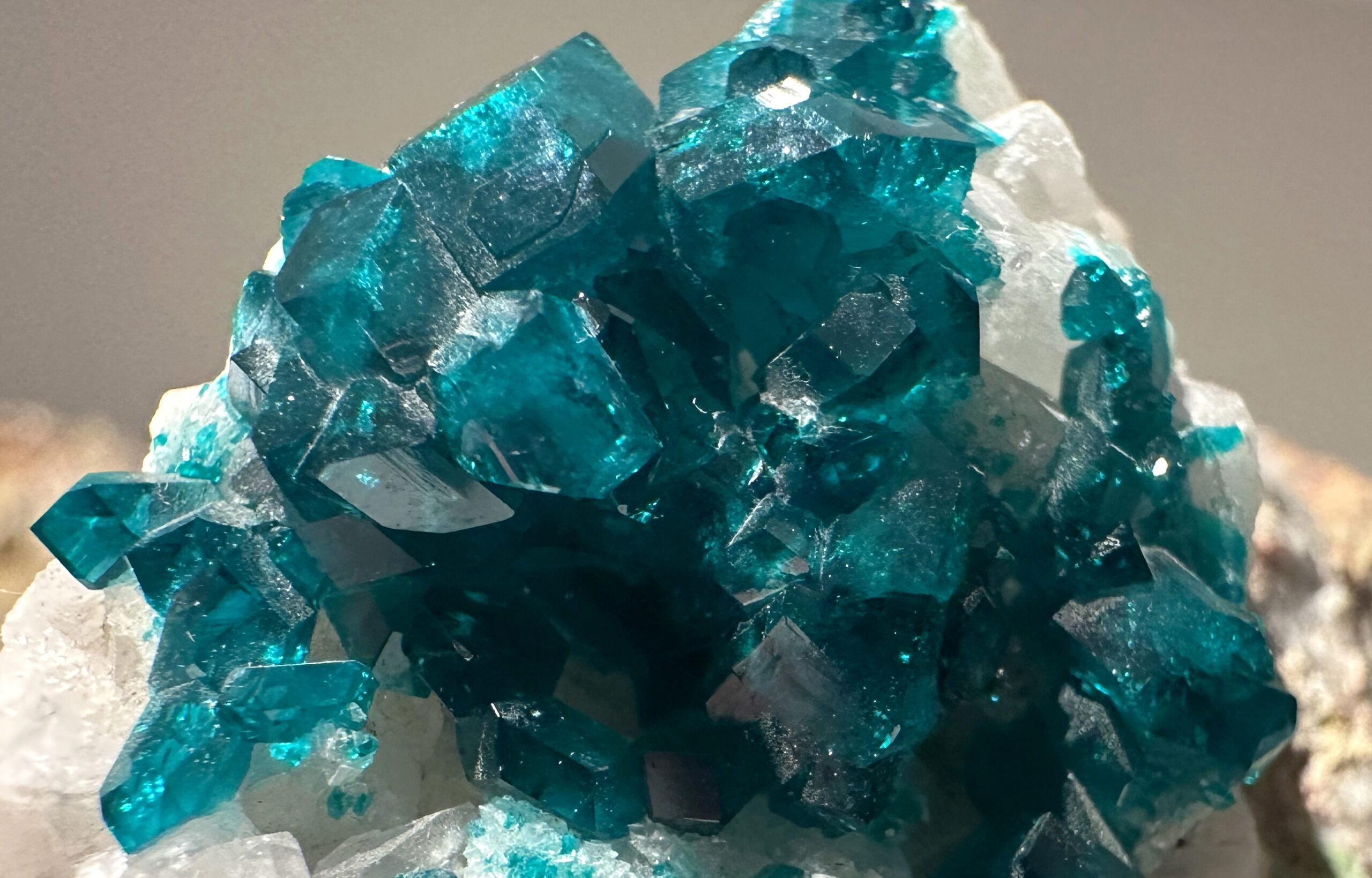
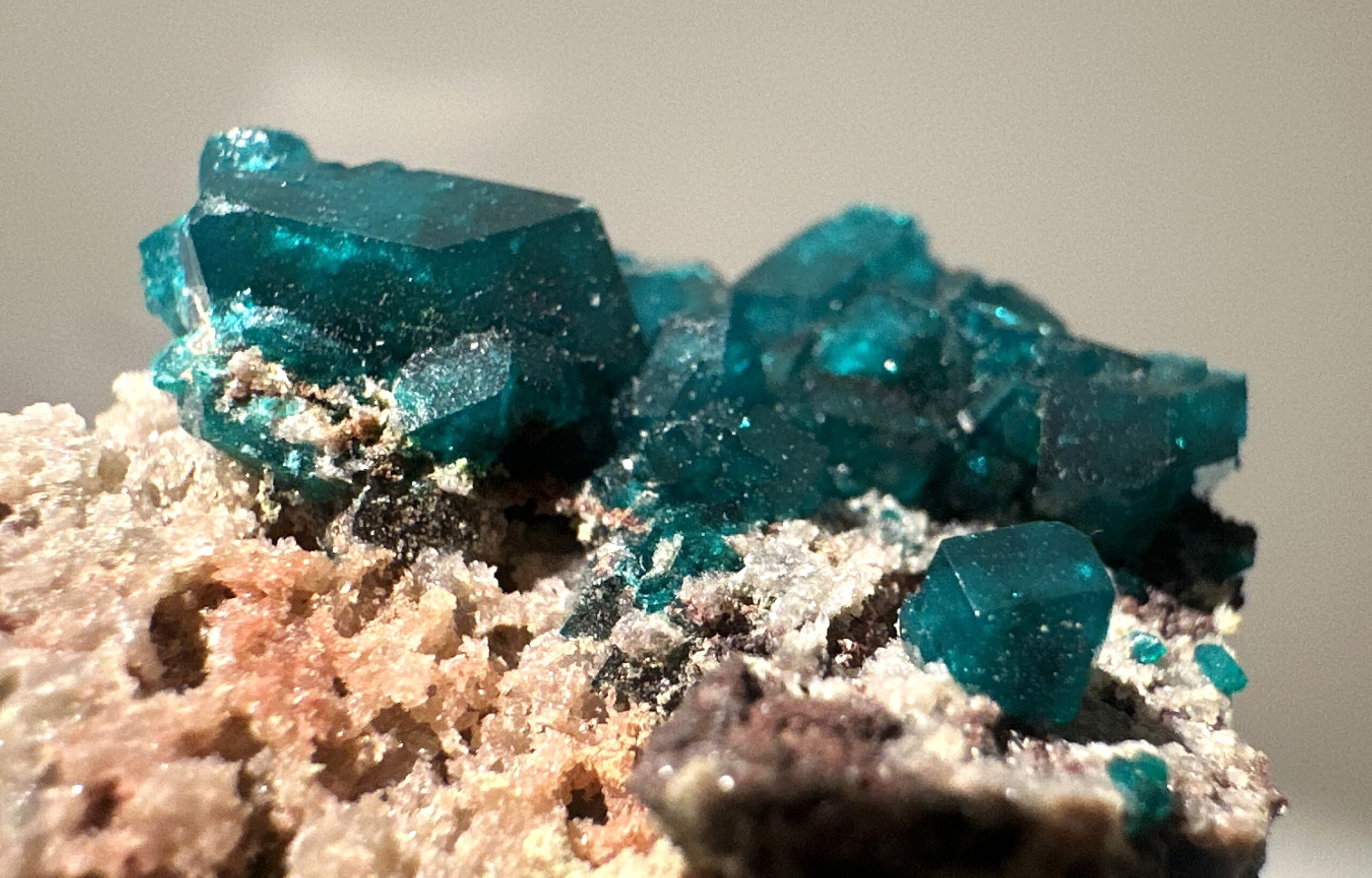
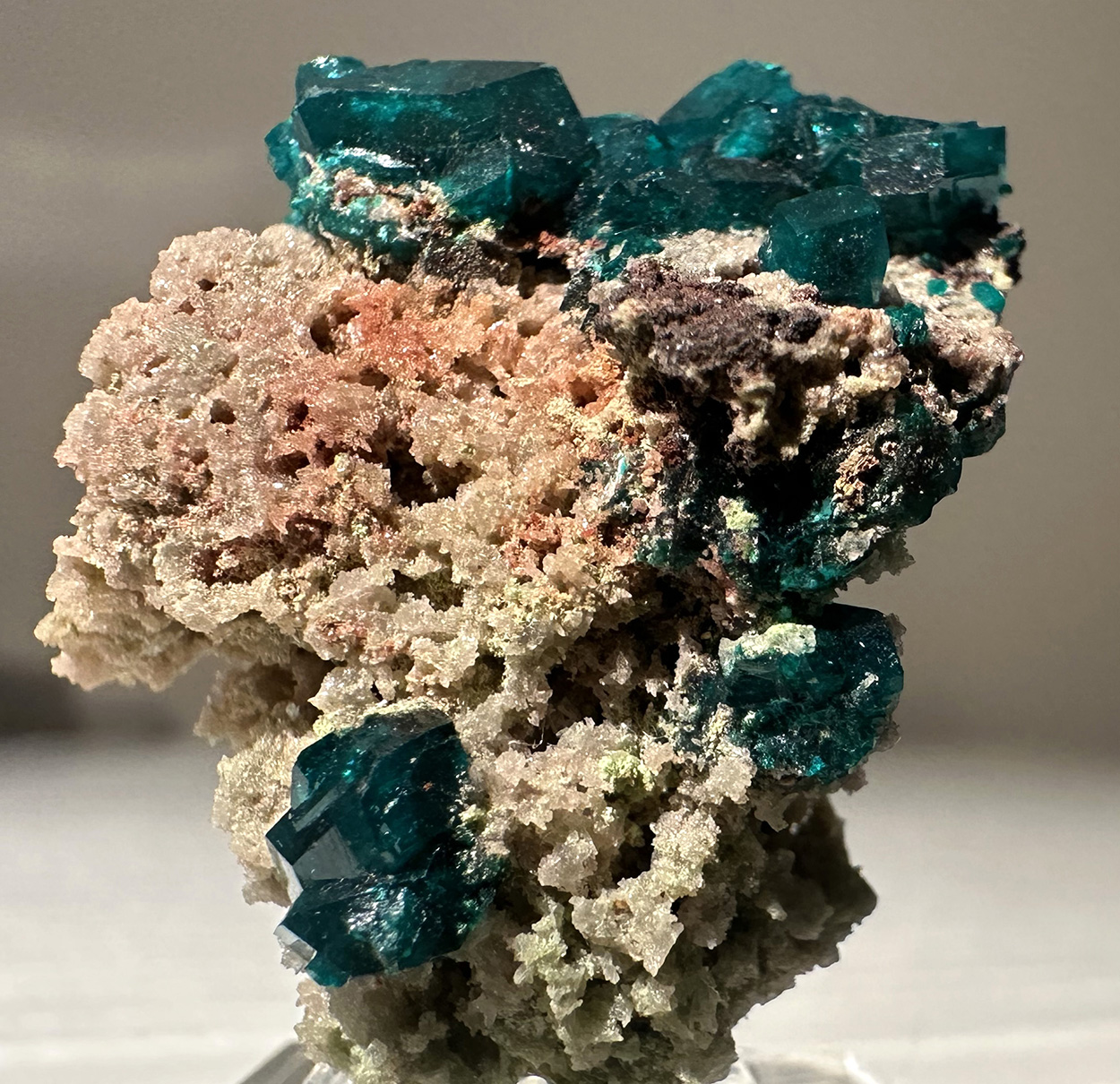
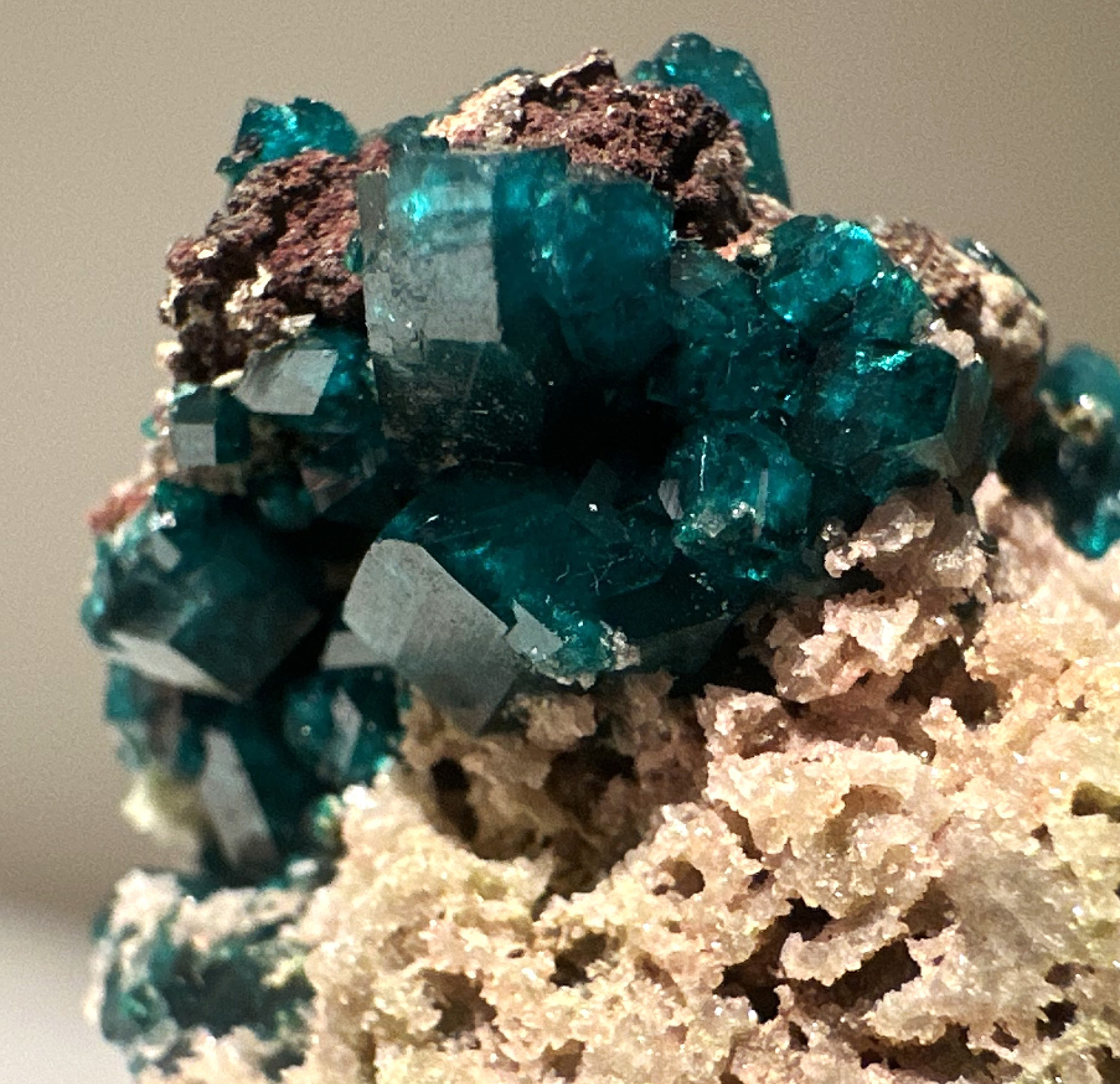
Wulfenite
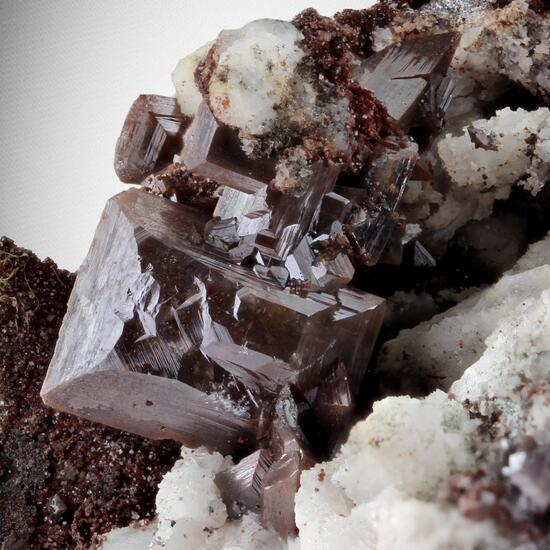
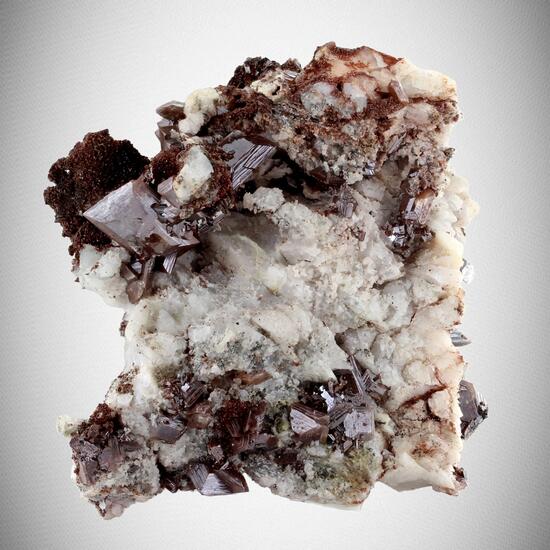
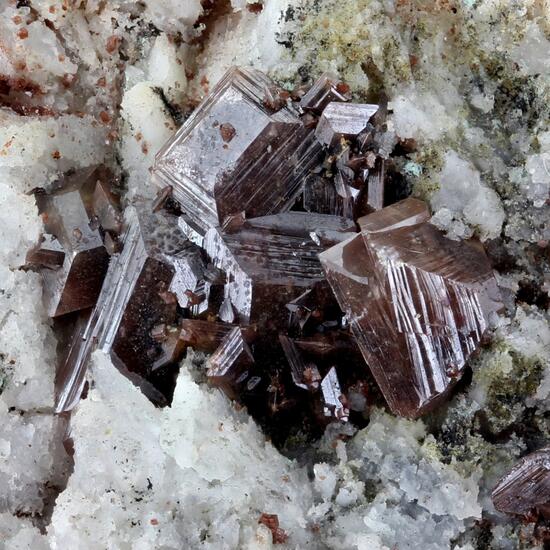

Azurite
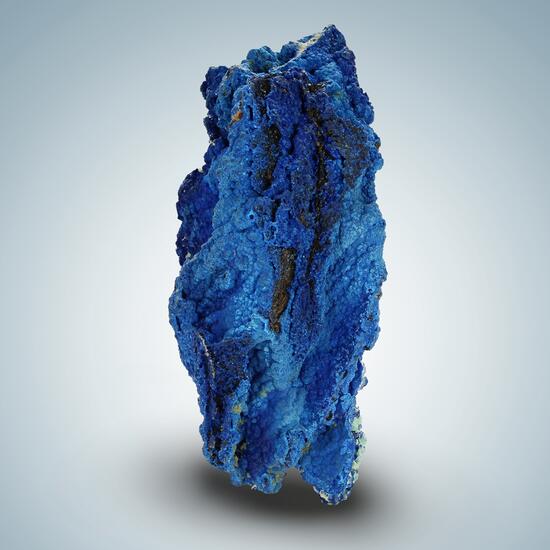
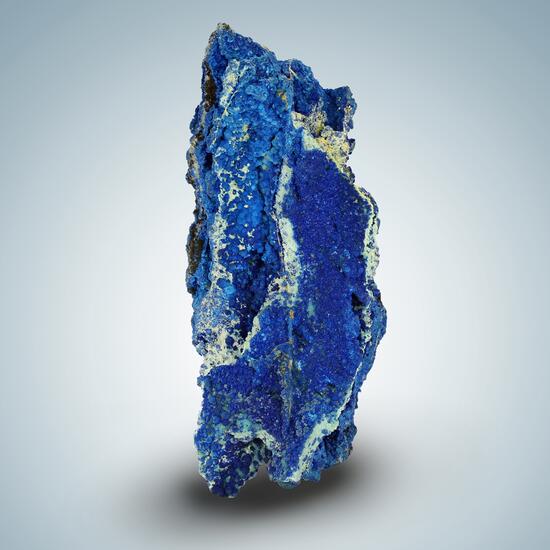

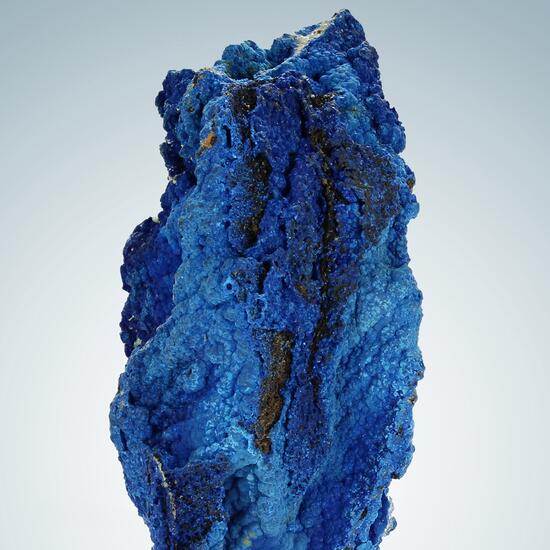
Sources
TSUMEB II – A Unique Mineral Locality – Gebhard, Georg – GG Publishing, Grossenseifen, Germany – 1999
Wikipedia
